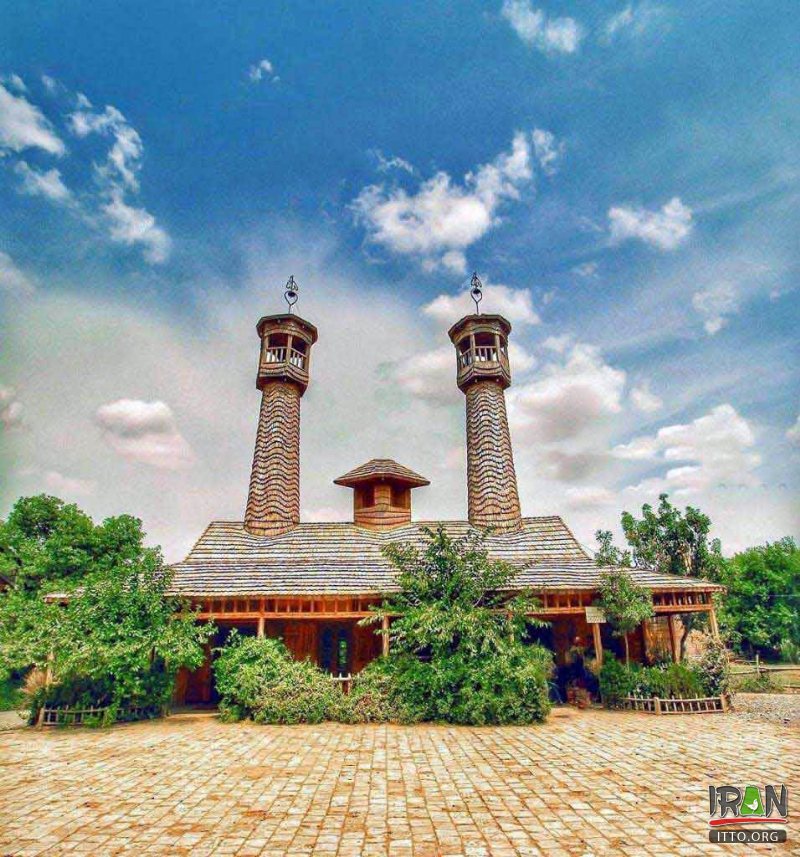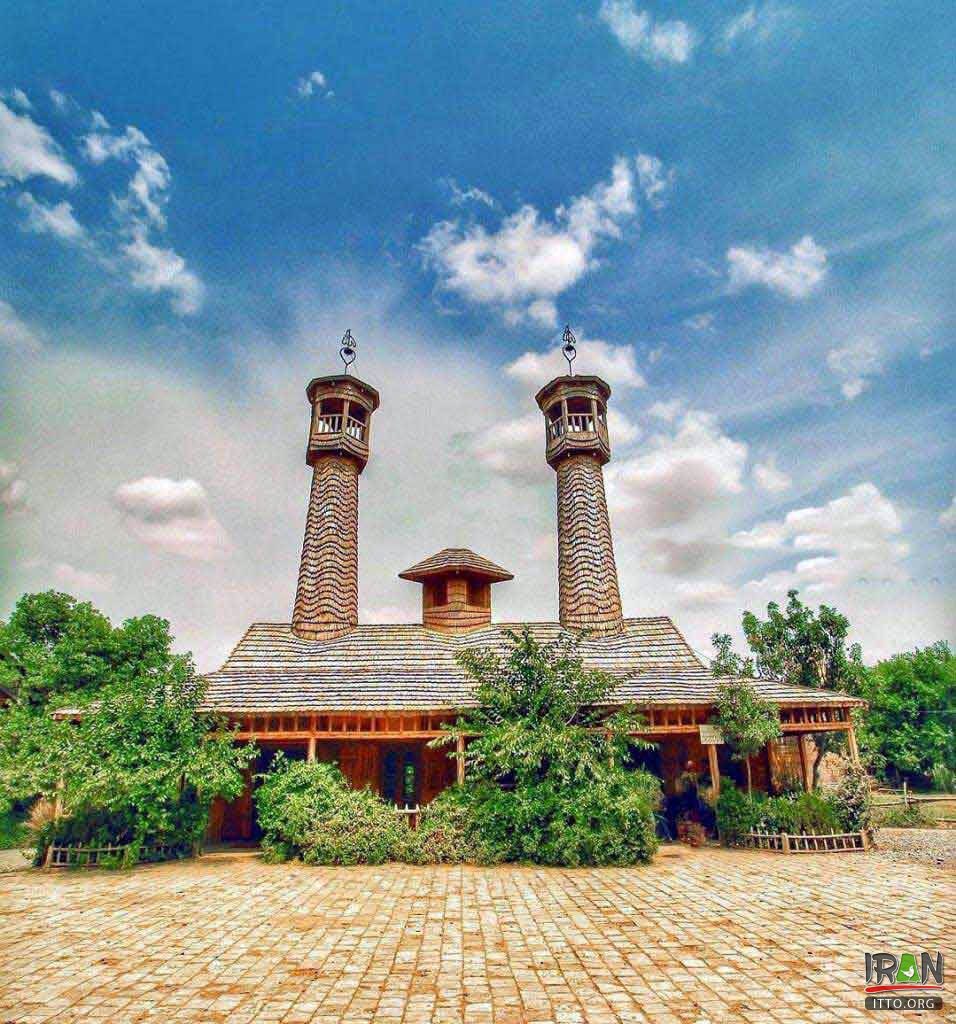Serenely sprawling in a well-watered and fertile plain at the southern foot of the Binalud Mountains, Choobin (“Wooden”) village is a special tourist destination situated near Neyshabur, Khorasan Razavi, northeast Iran.
Nearly every structure there is made of timber using modern methods inspired by cultural and historical background of the region. The village embraces a wooden mosque, museum, library, restaurants, bakery, pergola, as well as houses and shops.
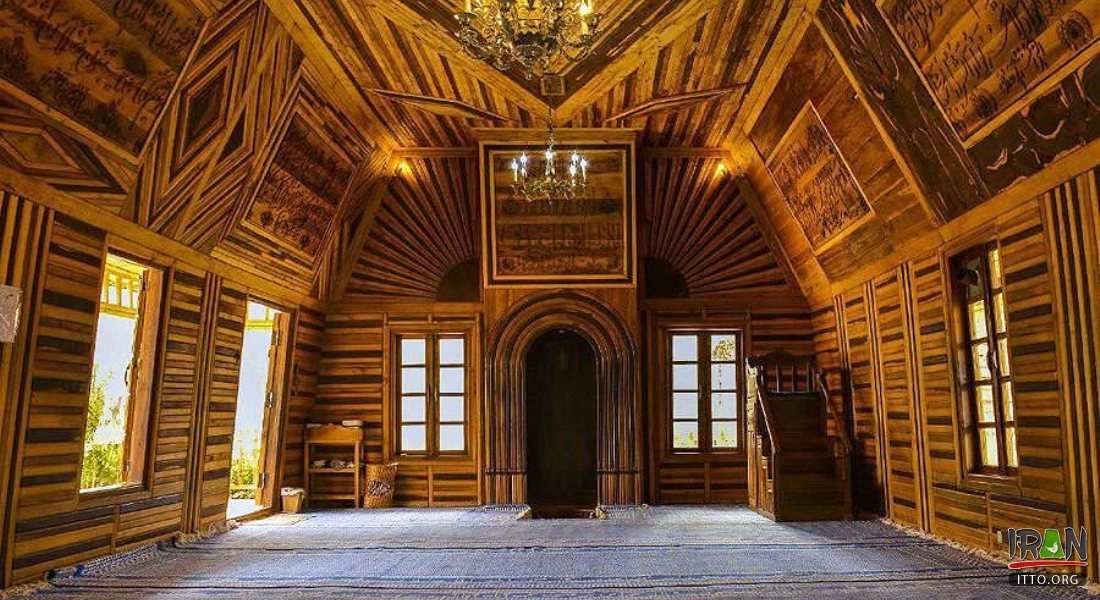
Choubin Village (or Woodwork village) is located near Neyshabour in Khorasan Razavi province, in northeastern Iran. The unique wooden village has been constructed by Engineer Hamid Mojtahedi and is one of the tourist resorts of Neyshabour.
Many visitors say that its mosque is the most attractive building of the village. Resembling an upside-down ship, the mosque is said to bear earthquakes of magnitude 8 on the Richter scale and less. Having a gable roof, the mosque covers an area of 200 square meters. Its two minarets are 13 meters high from ground and weigh four tons each.
Construction of the mosque took about two years and 40 tons of lumbers have been used in it. The wooden mosque is unique not only in Iran but also in the world. It can resist earthquakes with intensities up to eight Richter and its structure is such that it would not be damaged for hundreds of years, according to Iran Review.
The minarets are joined to the roof in a way that there are no pillars inside the mosque. Its walls are double-layered, and the framework is located between the layers. The framework of the minarets and the roof as well as the roof and the walls are connected in a spidery web style. It refers to its construction method which is similar to weaving web by spiders so that the minarets are joined together in a way that their weights are transferred equally first to the roof and then to walls and from there to ground.
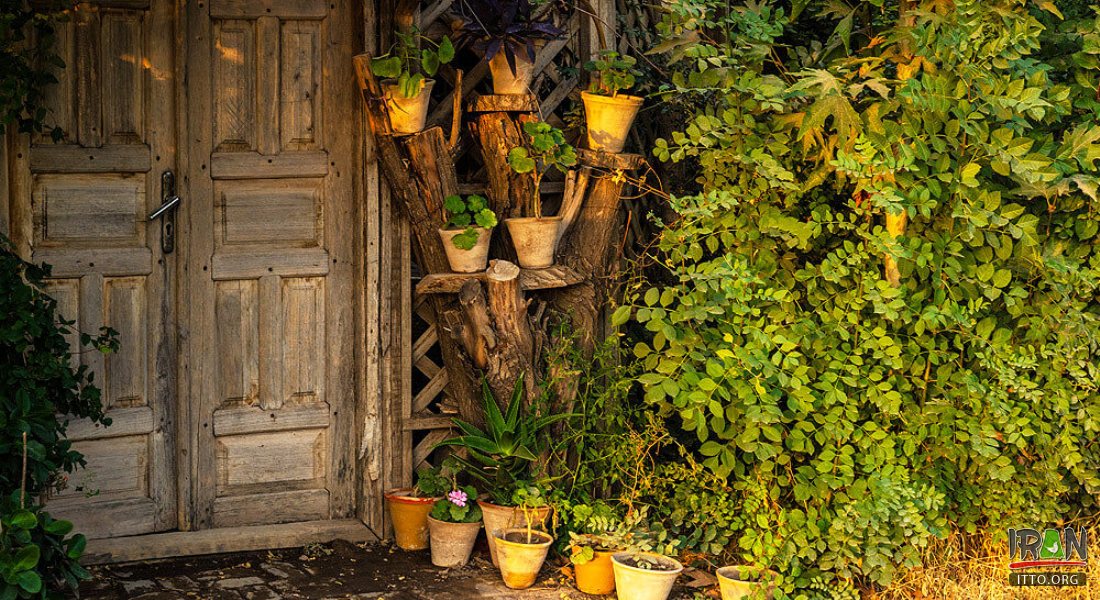
Various kinds of timber from fruitful and fruitless trees such as pine, mulberry, walnut, pear, cherry, ash and white poplar are used in the building and its interior decoration.
It is interesting that one can get access to the upper parts of the minaret by using ladder inside the minaret. More interesting is that a window has been installed at the spot the minaret and the roof are joined. The window acts like a ventilator helping to move hot and polluted air out of the mosque in summer and move in clean air through a special air duct installed on the roof. In this way, natural air conditioning takes place.
The walls of the mosque are a little slanted in order to make it easier to transfer weight from minaret to the ground.
It is to be noted that the place where the mosque is constructed is termite prone, therefore, special strategies have been used in construction of the mosque and other buildings of the complex to prevent the destructive effects of termites. As an example, the resident of the constructor of the complex has remained intact after 20 years. To protect the exterior walls of the building against rain and snow, special timbers with special processing have been used.
The cabinets, walls and even the trays of the pantry of the mosque are made of wood.
The mosque has an exterior porch, the floor of which is made of mud-brick. On the interior and exterior walls of the mosque, seven and six beautiful inscriptions with Quranic verses and with frames made of walnut and mulberry timbers, respectively, have been hung.
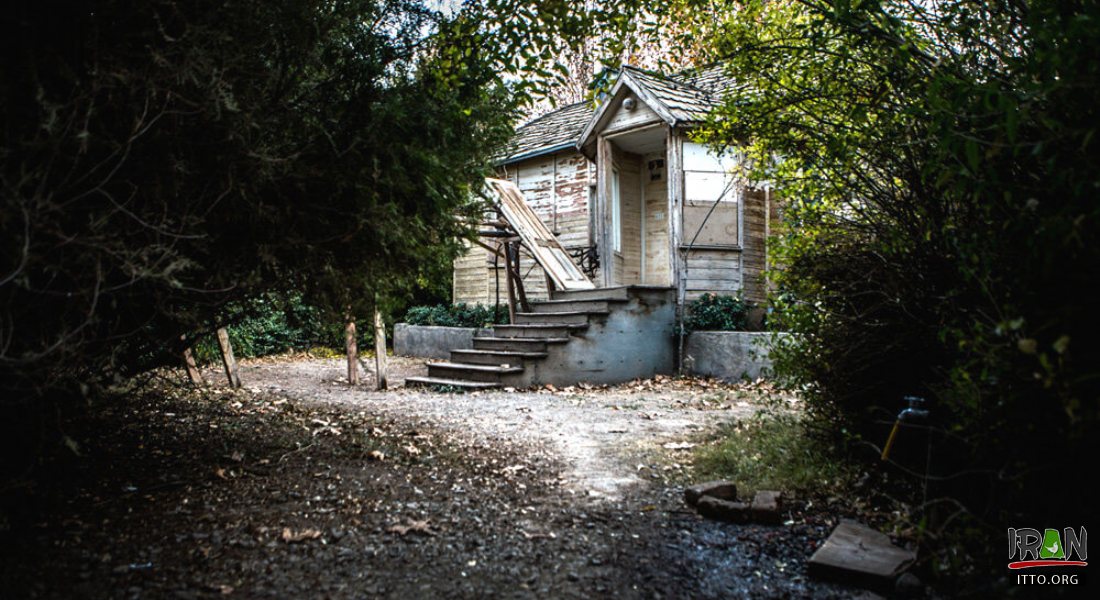
Nearly every structure there is made of timber using modern methods inspired by cultural and historical background of the region.
Various kinds of timber from fruitful and fruitless trees such as pine, mulberry, walnut, pear, cherry, ash and white poplar are used in the building and its interior decoration. Special lighting of the complex and extraordinary harmony of lively colors give special effects to it at night.
By constructing this complex, the constructor aimed to flourish tourism industry and revive the name and memory of a great man who once lived and served at this place.
